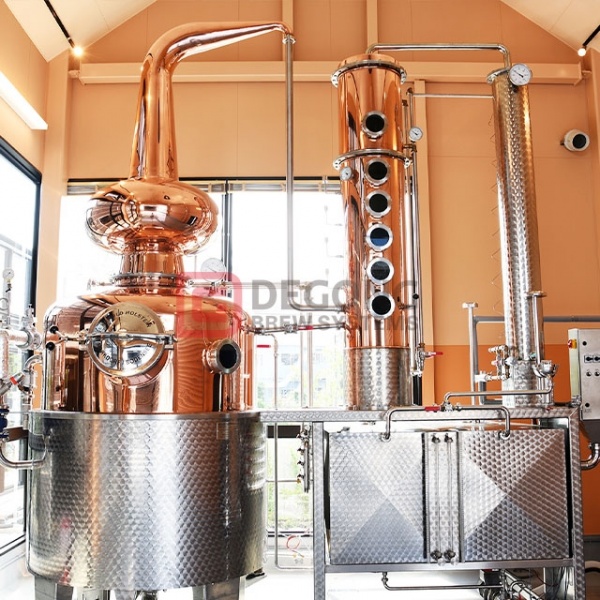About the product
Step 1: Get Your Device
Stills work on stills, which can be pot stills (the oldest type of stills) or column stills. It's a complex machine with uprights extending all the way to the ceiling. The distiller is connected to the condenser (the vessel through which the cooling water passes), which is connected to the barrel to collect the finished distillate.
Step 2: Clean the Still
Your still must be thoroughly cleaned before each distillation. After all, you don't want last-distilled dirt messing up your gin!
Step 3: Add Alcohol and Botanicals
There are many unique distillation techniques, often developed by stills through months and years of experimentation. But the basic principle remains the same: Plant-based and alkaline alcohol (also known as "neutral alcohol") is first added to the still. This spirit is a fermented alcohol, usually made from grains, with no added flavors. It is a mixture of water and pure alcohol.
Step 4: Heat
A heat source - some stills use an open flame, while others use a furnace or an electric heat source - begins to heat the bottom of the still. Alcohol starts to boil at 73 degrees Celsius, while water doesn't boil until 100 degrees Celsius. This means that the alcohol in the neutral spirit will gasify and start to rise, while most of the water will remain at the bottom of the still.
Step 5: Cool and Capture
As a gas, alcohol travels up the distillation head, tank top, or distillation column. It then passes through a condenser filled with cold water, where it cools and turns back into a liquid. The final distillate drips into the barrel, where the still can decide whether to keep it or return it to the still for a second round of distillation into a more concentrated solution of water and alcohol.
Stills work on stills, which can be pot stills (the oldest type of stills) or column stills. It's a complex machine with uprights extending all the way to the ceiling. The distiller is connected to the condenser (the vessel through which the cooling water passes), which is connected to the barrel to collect the finished distillate.
Step 2: Clean the Still
Your still must be thoroughly cleaned before each distillation. After all, you don't want last-distilled dirt messing up your gin!
Step 3: Add Alcohol and Botanicals
There are many unique distillation techniques, often developed by stills through months and years of experimentation. But the basic principle remains the same: Plant-based and alkaline alcohol (also known as "neutral alcohol") is first added to the still. This spirit is a fermented alcohol, usually made from grains, with no added flavors. It is a mixture of water and pure alcohol.
Step 4: Heat
A heat source - some stills use an open flame, while others use a furnace or an electric heat source - begins to heat the bottom of the still. Alcohol starts to boil at 73 degrees Celsius, while water doesn't boil until 100 degrees Celsius. This means that the alcohol in the neutral spirit will gasify and start to rise, while most of the water will remain at the bottom of the still.
Step 5: Cool and Capture
As a gas, alcohol travels up the distillation head, tank top, or distillation column. It then passes through a condenser filled with cold water, where it cools and turns back into a liquid. The final distillate drips into the barrel, where the still can decide whether to keep it or return it to the still for a second round of distillation into a more concentrated solution of water and alcohol.
Price
60000
Contact with supplier
Company
